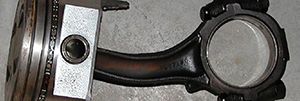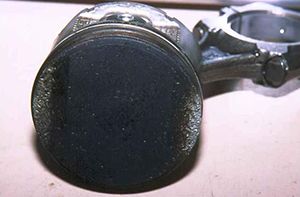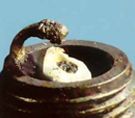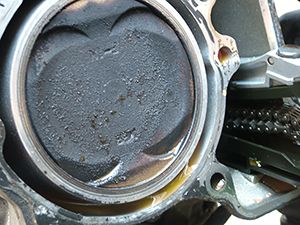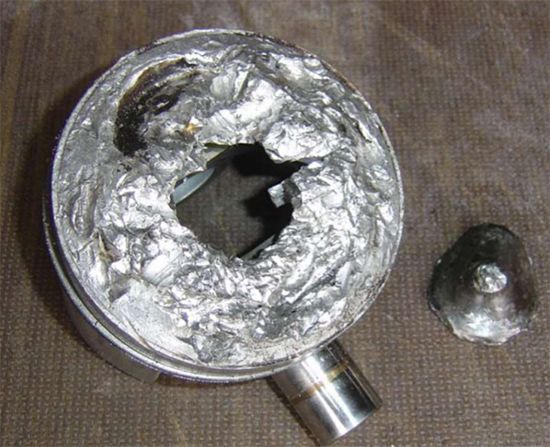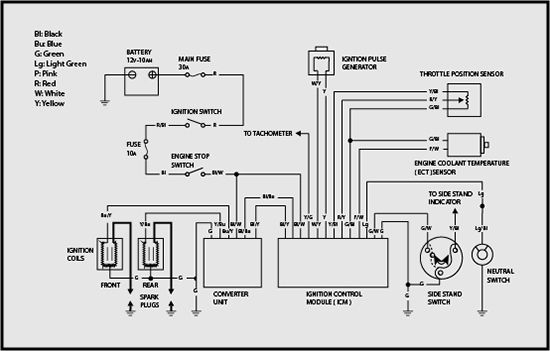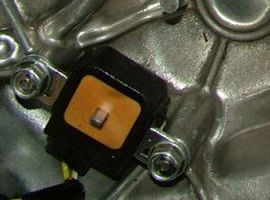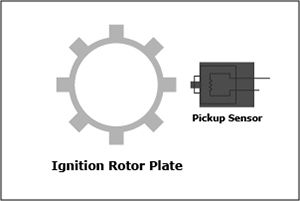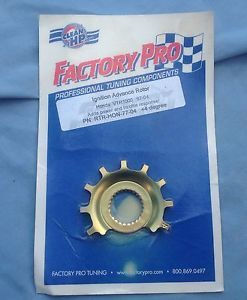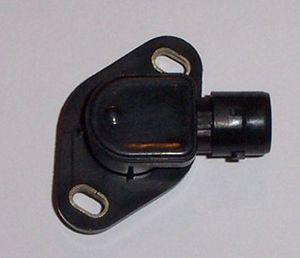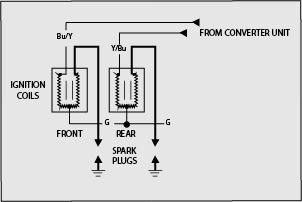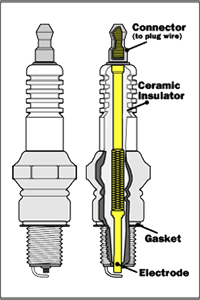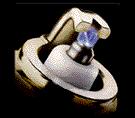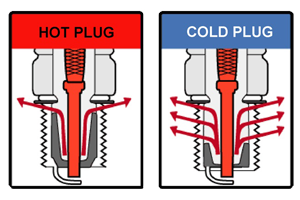To understand what's happening we have to first know whats going on inside the cylinder. We also have to appreciate the fact that the valves don't open and close instantaneously but overlap each other to a certain degree throughout the cycles. This is due to the physics of gas flow and the valves will have their opening and closing times controlled via the cams. We also have to understand that the explosion inside the cylinder is not instantaneous as is often misunderstood and is more of a 'controlled burn'. The point of igniting this charge 'Ignition Timing' is vital to the smooth running and longevity to the engine along with fuel economy and emissions control as well as getting the maximum performance out of an engine. It's all about finding an even balance or sacrificing one for the other.
THE FOUR STROKE CYCLE
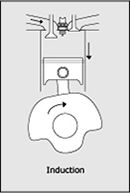
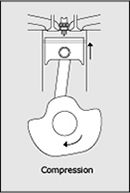
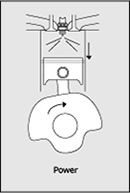
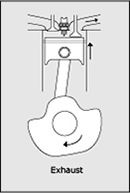
Diagram of the Basic Four Stroke Cycle
1. Induction (suck)
The Exhaust Valve is closing and the downward movement of the Piston begins the Induction stroke. The Inlet Valve is open allowing a fresh charge of vaporised fuel/air mixture to be drawn into the cylinder from atmospheric pressure. At the same time the downward movement of the Piston reduces pressure and creates a vacuum. The fresh charge lags behind the Piston on it's way down and begins to catch up as the Piston slows down towards the bottom of it's stroke. When the Piston nears the bottom of it's stroke, Bottom Dead Centre (BDC) the Inlet Valve then begins to close.
2. Compression (squeeze)
With the Inlet Valve closing the gas flow continues to fill the cylinder with a fresh charge until the Piston is on it's way back up from the momentum of the crankshaft and flywheel. After Bottom Dead Centre (ABDC) and with the Inlet Valve fully closed we then have a sealed cylinder filled with the vaporised fuel/air mixture ready to be compressed as the Piston moves upwards increasing pressure towards Top Dead Centre (TDC). As the Piston nears the top of the stroke some degrees Before Top Dead Centre (BTDC) the Spark Plug then Ignites the charge in a controlled fashion which rapidly expands spreading itself across the Combustion Chamber as it moves onto the Power stroke.
3. Power (bang)
The charge continues to expand After Top Dead Centre (ATDC) until it reaches maximum peak pressure which then forces the Piston back down making the rear wheel turn. At this stage the wasted fuel/air mixture ideally should be completely burned and needs to get forced out to make room for a fresh charge. During the downward movement of the Piston the increasing volume lowers pressure while the Exhaust Valve is still closed, though this is still higher than atmospheric. As the Piston nears bottom dead Centre (BDC) the Exhaust Valve begins to open releasing the pressure even more so in the cylinder as it moves onto the Exhaust stroke.
4. Exhaust (blow)
With the Exhaust Valve open the Piston moves back upwards forcing the wasted fuel/air mixture up and out the Exhaust Valve increasing gas velocities along the Exhaust Pipe. As the Piston nears Top Dead Centre (TDC) the velocity of gases along the exhaust pipe creates a partial vacuum inside the cylinder and the Intake Valve begins to open. As soon as pressure drops below that of the intake a fresh charge of vaporised fuel/air mixture will begin to be drawn in ready for the cycle to begin all over again. By opening the Inlet Valve before the Exhaust Valve has closed, the momentum of exhaust flow will help draw the fresh charge in which is drawn towards the closing Exhaust Valve. This ensures that the combustion chamber is thoroughly scavenged and cleared of any waste gases. Ideally the Exhaust Valve should close as the fresh fuel/air mixture reaches it.
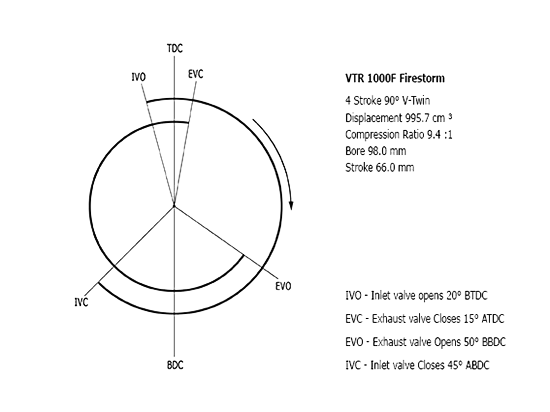
The above Diagram shows the Point of Valve Open and Closing times
[youtube][/youtube]
http://www.youtube.com/watch?v=-dwHUz7nWPA
Controlled Burn
Now let's look at how the controlled charge burns across the combustion chamber. When the spark ignites the vaporised fuel/air mixture it spreads itself from the centre of the triggering device which should be at the spark plug electrode which ignites the charge which then spreads across the mixture. You will often hear this combustion progression across the cylinder referred to as the flame front. Visualise the way you would blow up a ballon or blowing a bubble, it starts off slowly and as it expands it increases in speed spreading itself out like the ripples on water as a stone lands when thrown. This all takes place within milliseconds.

This Diagram illustrates the Progression of the Burn
This could be compared to the fuse on a firework which may be easier to understand. When you initially ignite the fuse there is a moment where there is a pause in the sparks before it starts to travel along the line. This starts off at a slower burn rate and as it nears the firework it reaches the faster "quick match" fuse and burns more rapidly, reaches the gunpowder and sets of the explosion.
[youtube][/youtube]
(:-})

